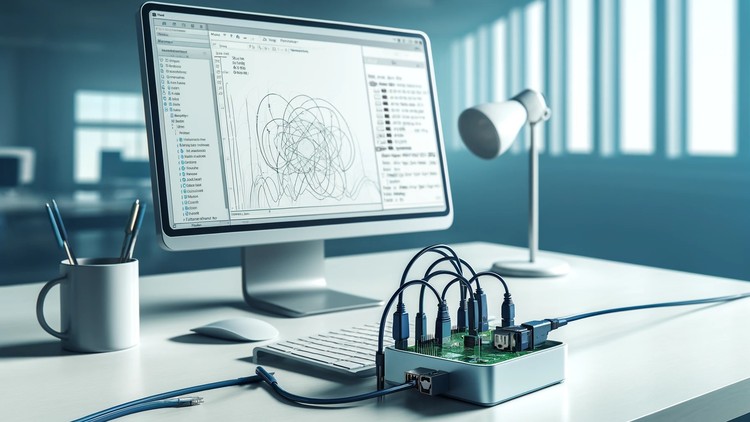
You will learn how to connect Raspberry Pi and LabVIEW, the software and hardware part and why it’s useful
What you will learn
Link LabVIEW with Raspberry Pi
Download and Install the Required Software
Fully Control Your Raspberry Pi using LabVIEW
Make your own LabVIEW Interface to Interact with Raspberry Pi
Connect to Raspberry Pi Remotely without a display
Install NI-VISA Library
Install LabVIEW MakerHub LINX
Setting Up the RPI
Installing LabVIEW on the RPI
Run an Example
Adding New VIs
Why take this course?
¡Hola! It seems like you’re outlining a course on how to install LabVIEW (Laboratory Virtual Instrument Engineering Workbench) on a Raspberry Pi, run examples, create new VIs (Virtual Instruments), and access practical examples and resources for beginners, hobbyists, makers, engineering students, and professionals. This is a great idea as LabVIEW is a powerful tool for data acquisition, instrument control, and visualization, and the Raspberry Pi is an incredibly versatile single-board computer that can interface with various sensors and peripherals.
Here’s a structured approach to creating this course:
Course Title:
LabVIEW on Raspberry Pi: A Beginner’s Guide to Building Interactive Projects
Course Description:
This course is designed for beginners interested in leveraging the capabilities of Raspberry Pi with LabVIEW to create interactive projects. Students will learn from scratch how to install LabVIEW on a Raspberry Pi, run examples, and develop their own VIs. The course will also provide resources and practical examples for real-world applications.
Course Outline:
- Introduction to Raspberry Pi and LabVIEW
- Overview of Raspberry Pi
- Introduction to LabVIEW
- Use cases and potential of combining both
- Setting Up Your Raspberry Pi Environment
- Requirements for the course (Raspberry Pi model, accessories)
- Initial setup: OS installation, configuration, and updates
- Installing LabVIEW on Raspberry Pi
- Downloading LabVIEW for ARM architecture
- Step-by-step installation guide
- Verifying installation and system requirements
- Running Example VIs
- Locating example VIs within LabVIEW
- Understanding the structure of a VI
- Running and interacting with basic examples
- Creating Your First VI
- Introduction to LabVIEW’s graphical programming interface
- Building a simple VI from scratch
- Saving, debugging, and optimizing your VI
- Interfacing Raspberry Pi with Real-World Devices
- Connecting sensors and actuators
- Controlling GPIO pins using LabVIEW
- Reading data from connected devices
- Advanced VIs: Data Acquisition, Processing, and Visualization
- Setting up data acquisition with DAQ hardware
- Real-time data processing in LabVIEW
- Creating graphs and visualizations in LabVIEW
- Project Work: Building Your Own Application
- Defining a project scope
- Designing the system architecture
- Implementing the VIs for your application
- Troubleshooting Common Issues
- Debugging common errors in LabVIEW and Raspberry Pi
- Optimizing performance and resource usage
- Accessing More Practical Examples and Resources
- Finding additional resources (online forums, tutorials)
- Exploring community projects and collaborations
- Continuing education and advanced topics
Course Requirements:
- Basic understanding of electronics
- A Raspberry Pi board
- No prior experience with LabVIEW or Raspberry Pi required
About the Instructor/Team:
The course will be delivered by the Educational Engineering Team, a team of skilled engineers with over 13 years of experience in teaching and practical projects. They have a proven track record of educating over 250,000 students and are committed to providing comprehensive and hands-on knowledge that can be immediately applied to real-life projects.
Additional Resources:
- Access to a YouTube Channel with hundreds of thousands of views and a strong subscriber base.
- Four published Microcontroller books.
- A wealth of online support for electronics, programming, and microcontroller hobbyists and professionals.
By following this course outline, you can create a comprehensive and engaging learning experience for individuals looking to bridge the gap between Raspberry Pi and LabVIEW. Remember to include practical examples and real-world applications to solidify the concepts taught in the course.